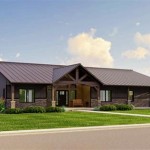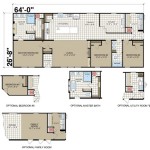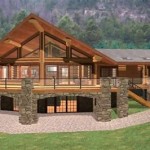House Plans Built In Phases
Building a house is exciting but can also be financially daunting. One way to make it more manageable is to build in phases. This involves breaking down the project into smaller, more affordable stages.
The first phase typically includes the foundation, framing, and roof, creating a basic weatherproof structure. Subsequent phases may focus on interior work, such as walls, ceilings, plumbing, and electrical, and finally, the finishing touches like cabinetry, trim, and appliances.
Benefits of Phased House Plans
- Financial flexibility: Breaking down the project into phases allows you to spread out the costs over time.
- Adaptability: As your needs and budget change, you can adjust the scope of each phase accordingly.
- Quality control: Each phase can be completed with greater attention to detail, resulting in a higher-quality home.
- Less stress: Building in phases can reduce the stress associated with traditional one-time builds.
Considerations for Phase Building
- Planning: Careful planning and coordination are crucial for successful phased builds. Create a clear timeline and budget.
- Materials storage: Ensure you have adequate storage space for materials and equipment during each phase.
- Contractor selection: Choose contractors who are experienced in phased builds and can adhere to the plan.
- Long-term vision: Consider the long-term design goal when planning each phase to avoid costly rework later.
Types of Phase Building Approaches
- Linear phasing: Phases are completed sequentially, with each phase dependent on the previous one being finished.
- Overlapping phasing: Phases overlap slightly, allowing for greater flexibility and efficiency.
- Occupancy-driven phasing: The first phase creates a habitable space, with subsequent phases adding to the home's functionality.
- Condition-based phasing: Phases are triggered by specific events, such as the sale of an existing home or changes in family circumstances.
Tips for Success
- Hire a qualified architect or designer: They can help you create a comprehensive plan that incorporates your vision and budget.
- Work with reputable contractors: Experience and expertise are vital for phased builds.
- Communicate effectively: Maintain clear communication with contractors, suppliers, and all stakeholders.
- Be flexible and adaptable: Changes may arise during the build, so be prepared to adjust the plan as needed.
- Enjoy the process: Building a house in phases can be a rewarding experience. Embrace the flexibility and enjoy the opportunity to create a home that truly meets your evolving needs.

Build In Stages Small House Plan Bs 1084 1660 Ad Sq Ft Expandable To Sf Plans Craftsman Style

Home Plan To Build In Stages 55166br Architectural Designs House Plans

Hugedomains Com House Plans Building A With S

Ina Home Plans Llc Chphouseplans Profile

Cape Cod House Plans For A Small Home Built In Two Phases Building

Diffe Types Of House Plan Drawings

Planning The Stairs 10 Tips For Perfect Staircase

Cape Cod House Plans For A Small Home Built In Two Phases

House Plans 2nd And Lower Levels Phase 1 Marriage By Design Blog

30x40 House Plans Inspiring And Affordable Designs For Your Dream Home








